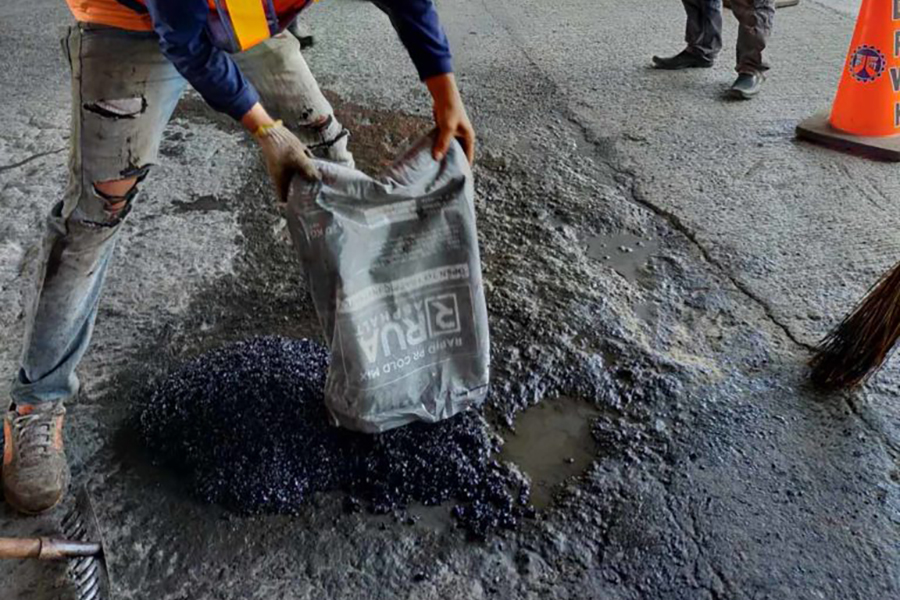Experience the Difference: Hot Mix Asphalt Paving for Regrading Projects
Experience the Difference: Hot Mix Asphalt Paving for Regrading Projects
Blog Article
Unlocking the Tricks of Warm Mix Asphalt Technology
Checking out the midsts of hot mix asphalt innovation reveals a world where accurate formulas and thorough processes assemble to form our roadways and facilities. The combination of fillers, aggregates, and binders isn't merely a construction job yet a critical orchestration of durability and efficiency. As we peer right into the detailed dancing of parts, a tapestry of durability and sustainability unfolds. What exists under this surface area of asphaltic proficiency, and what tricks wait to be unveiled in the world of leading developments?
Significance of Warm Mix Asphalt
Warm Mix Asphalt plays an essential function in modern-day infrastructure development due to its sturdiness and cost-effectiveness. As the most generally utilized leading product for roadways, freeways, and vehicle parking whole lots, Warm Mix Asphalt supplies an array of benefits that contribute to its significance in building jobs.
The longevity of Warm Mix Asphalt stems from its composition, that includes aggregates, binder, and filler materials that are thoroughly selected and mixed to meet particular performance demands. This accurate combination results in a flexible and solid pavement that can endure frequent use without substantial damage. In Addition, Warm Mix Asphalt is 100% recyclable, additional enhancing its sustainability and environmental advantages. Generally, the significance of Hot Mix Asphalt in framework growth can not be downplayed, as it continues to be a keystone of contemporary building practices.
Elements of Asphalt Mixes
The composition of asphalt blends contains very carefully picked accumulations, binder, and filler materials that are important for accomplishing certain performance requirements. Aggregates are the key element of asphalt mixes, providing strength and security. These accumulations can be natural, such as gravel or crushed rock, or synthetic, like recycled materials from old sidewalks. The binder, typically asphalt or asphalt concrete, holds the aggregates with each other and gives versatility and durability to the mix. The choice of the binder is crucial as it directly affects the mix's efficiency in various weather conditions. Fillers, such as moisturized lime or Rose city cement, are utilized to boost the mix's workability and aging resistance. Angled Parking.
The mix and proportion of these elements play a substantial role in figuring out the top quality and efficiency of the asphalt mix. Designers carefully develop the mix to fulfill details requirements, considering aspects like traffic volume, climate conditions, and sidewalk life-span. Proper selection and balancing of aggregates, binder, and fillers are vital for producing sturdy, lasting asphalt sidewalks.
Mixing and Production Methods

Once the aggregates are selected, the binder, frequently asphalt cement, is contributed to bind the materials together. The binder's high quality and quantity substantially affect the mix's stamina, versatility, and resistance to environmental aspects. Furthermore, fillers like hydrated lime or Portland cement may be incorporated to boost details features of the asphalt mix, such as its workability or moisture resistance.
During production, the aggregates and binder are warmed, commonly in between 250-325 ° F(121-163 ° C ), to assist in mixing and guarantee proper layer my link of the accumulations. The mixing process has to be detailed to accomplish a homogeneous mixture that advertises the preferred performance features of the asphalt. Different techniques, such as set mixing or drum blending, are utilized to achieve consistent and high-grade asphalt blends for building and construction projects.
Variables Impacting Asphalt Performance
Elements affecting asphalt performance include an array of variables that influence the sturdiness, durability, and total quality of asphalt sidewalks. One key element is the top quality of products made use of in the asphalt mix.

Environmental problems also affect asphalt performance. Temperature level variations, dampness infiltration, and website traffic tons can all influence the architectural stability of the sidewalk. Style factors to consider, such as pavement density and drainage, are necessary in guaranteeing the long-term performance of the asphalt sidewalk. By carefully considering these designers, professionals and elements can optimize asphalt performance and improve the solution life of sidewalks.
Lasting Practices in Asphalt Technology

Additionally, the growth of warm-mix asphalt (WMA) technologies has actually obtained grip recently. WMA permits the production and positioning of asphalt blends at lower temperatures compared to right here traditional hot-mix asphalt, resulting in lowered power consumption and greenhouse gas emissions. The usage of porous asphalt mixes can assist minimize stormwater overflow concerns by allowing water to penetrate via the pavement and right into the ground, promoting all-natural water purification and recharge procedures. By applying these lasting methods, the asphalt industry can add to developing a more durable and environmentally pleasant infrastructure network.
Conclusion
To conclude, hot mix asphalt modern technology plays a crucial function in modern-day infrastructure development because of its longevity and cost-effectiveness. By thoroughly balancing components, utilizing appropriate mixing methods, and thinking about different aspects, engineers can produce premium asphalt blends that stand up to rush hour tons and severe climate condition. Embracing sustainable techniques, such as making use of recycled products and warm-mix modern technologies, even more improves the environmental kindness of asphalt modern technology.
Blending and production techniques in warm mix asphalt modern technology include the accurate combination and handling of accumulations, binder, and fillers to produce a high-performance and durable asphalt mix.Variables affecting asphalt performance incorporate an array of variables that affect the resilience, long life, and total high quality of asphalt sidewalks. Lasting practices in asphalt modern technology encompass various initiatives aimed at lowering the environmental impact of asphalt production and paving procedures. By incorporating redeemed asphalt sidewalk (RAP) and recycled asphalt roof shingles (RAS) into brand-new asphalt mixes, the sector can substantially decrease the intake of raw materials and power, while likewise lowering garbage dump waste.
WMA permits for the production and positioning of asphalt mixes at reduced temperatures compared to traditional hot-mix asphalt, resulting in minimized power usage and greenhouse gas exhausts.
Report this page